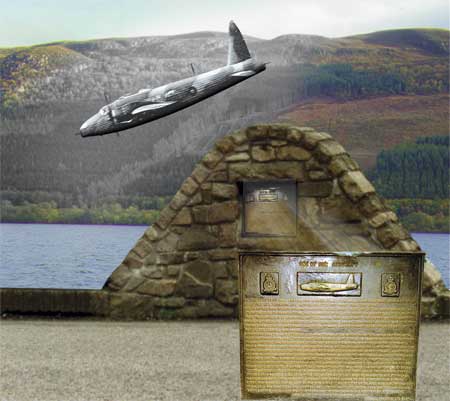The Loch Ness Project 
Loch Ness
Centre
The Wellington Bomber |
|
| The World War II Wellington bomber N2980, squadron letter R for
Robert, had completed fourteen missions when she was transferred to
training duties at No. 20 O.T.U. at Lossiemouth. On New Year's Eve
1940, pilots Sqdr.L. Marlwood- Elton and P/O Slatter took off in the
late afternoon with a crew of 6 trainee navigators. While flying along the Great Glen at a height of 8000ft. they encountered a snowstorm and the starboard engine cut out. Losing height, Marlwood -Elton ordered the trainees to bale out. At this point, the rear gunner, Sgt. Fensome was killed when his parachute failed to open but the others landed safely. In the dusk, the two remaining men fought the aircraft down through the snow clouds to ditch in the northern basin of Loch Ness near the A82 road. They climbed onto the wing, launched their inflatable dinghy and paddled ashore where a lorry driver gave them a lift into Inverness in time to join the New Year celebrations. Marlwood -Elton thought he would never see R for Robert again. Back to Groundtruth Index |
 Marty Klein, working with the Academy of Applied Science in 1976, discovered the lost aircraft on side-scan sonar. It was first thought to be a Catalina flying boat but further examination by naval diving teams established that it was the lost Wellington. It was lying in 70m of water, which was too deep for scuba diving survey. Therefore, in 1981 the Project's research vessel "John Murray" assisted Robin Holmes of Heriot Watt University by providing a platform for a survey by the Remote Operated Vehicle (ROV) "Sea Pup". The Wellington was recovered in 1985 and restored at Weybridge where she had been built. |
|
|
|